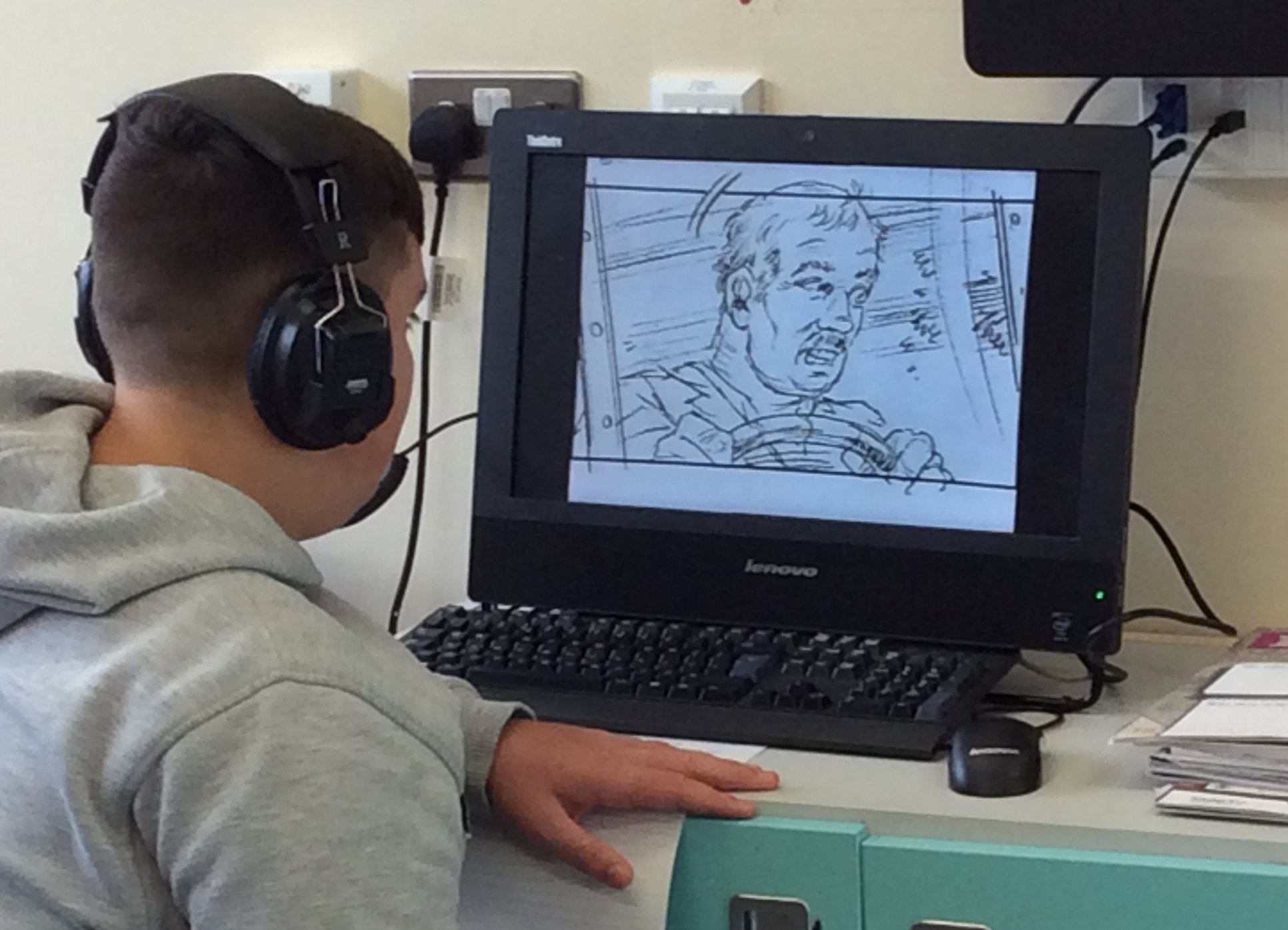
The Summer Arts College pilot at Hillside Secure Unit
Photo: Anna Barratt
Achieving a qualification on the inside
Young offenders in Wales gained the Arts Award during a Summer Arts College – for some it was their first ever qualification. Angela Rogers tells how their success was realised.
“If I had stuff like this on the outside I wouldn’t get into trouble”, said one participant at the Hillside Secure Unit.
Last summer, Engage Cymru piloted Arts Award projects with young offenders at Parc Prison in Bridgend and Hillside Secure Unit in Neath. The 14 offenders who took part all achieved a Bronze level award, which for many was the first qualification they had ever achieved.
Constant and abundant encouragement was needed to keep them to task, but gaining a qualification at the end was without doubt the key motivator
None of the four artists who delivered the projects had previously worked in secure settings, but we had worked with them previously on a range of projects in gallery settings with high-risk and vulnerable young people. They had also taken part in our ‘Artists as Learners’ programme alongside young people identified through youth services.
The training, led by Unitas that runs Summer Arts Colleges for young offenders in England and Wales, focused on understanding and preventing non-productive behaviours, safeguarding and challenges to engagement in the arts. In addition, all four had undertaken their Arts Award advisor training and were familiar with learning outcomes from previous Engage programmes supporting vulnerable young people including Visual Roots and Envision.
Practicalities of the award
The flexible nature of Arts Award allowed for a bespoke approach to completing the tasks and incorporated the young people’s interests from the outset. Ice-breaker activities included ‘five-minute’ sculptures, logo design and quick-fire activities to highlight the range of mediums to choose from.
The Bronze award requires young people to collect evidence of their experience with an artform in an individual art log or portfolio. In addition, they have to attend an arts event, research the work of an artist who inspires them, and pass on a skill they have learnt to their peers.
Leaving the secure setting to attend an arts event was not an option. Instead, the artists had to bring the art to them, which they did via virtual tours of gallery exhibitions and screening a selection of contemporary art films and videos.
With restrictions on tools and materials, the artists had to be resourceful and ingeniously devised ways to engage the young people using the most simple of resources. For example, as scissors were contraband, they experimented with paper ripping to create Matisse-like collages. Without access to the internet, the young people relied on art catalogues, magazines and other printed matter that the artists brought in to satisfy the research element.
A challenging experience
There is no doubt that the three weeks proved challenging for the artists, not least because of the threatening environment and external factors affecting the young people. The young people also had low-level literacy skills (most of the 16 to 18 year olds had the literacy level of a child aged seven or eight), low self-esteem and lack of confidence. Constant and abundant encouragement was needed to keep them to task, but gaining a qualification at the end was without doubt the key motivator.
On reflection, although the experience had challenged and stretched the artists on a whole range of levels, they all found it satisfying to see the young people’s pride and tangible growth in self-esteem on receiving their qualification. They all felt their professional development had benefitted and they are planning a group show focusing and reflecting on their experience.
The external Arts Award moderators said of the art logs: “Some very powerful work has taken place and the young people have had meaningful opportunities to respond to new art work and develop their skills and creative response.”
The learning from these projects was shared at our recent Unlocking Potential training event, where Dusty Kennedy, Head of Youth Justice Board Wales (YJB Cymru), highlighted the potential power of the arts to turn young peoples’ lives around: “The opportunities for really meaningful engagement with some of our most troubled but potentially creative young people are clear… We in YJB Cymru want to work with the relevant national bodies to develop a national strategic approach to capturing this energy.”
Critical friend support
This could not have been achieved without the support over the past few years of Ronda Gowland-Pryde, Head of Education at the John Hansard Gallery in Southampton, who acted as our ‘critical friend’. Ronda helped to champion Artsmark in youth justice settings and, as a result of her research on the impact that a gallery-supported Arts Award programme can have on young offenders, she has advocated for the impact of arts interventions.
As a critical friend, she contributed to the discussion on arts in youth justice contexts, signposted to policy, supported events and was also a soundboard for ideas and new approaches. Similarly, she offered guidance on evidence-gathering and collation in order to support wider advocacy within Wales.
Angela Rogers is Coordinator of Engage Cymru.
www.engage.org/engage-cymru
Join the Discussion
You must be logged in to post a comment.